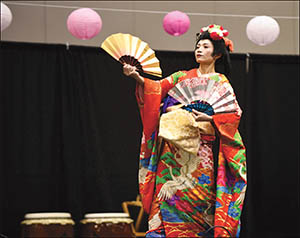Leaves can be raked and piled around the base of trees and shrubs and raked into garden areas, providing native and diverse habitats for pollinators and invertebrates in the winter months.
By Susan Koenig
Let’s think about fall cleanup for a minute. It is that time of year again. However, let’s not be too hasty. We spend all summer planning, planting, grooming, and growing native plants and other plants for pollinators, birds, and beneficial insects because we want to do our part for the ecosystem. Then fall comes along, and we don’t think about the pollinators, birds, and insects and how they overwinter in our environment.
Leaving the leaves and other plant debris doesn’t mean you have to sacrifice your yard looking too unkempt. Too many leaves can kill grass, but they can be raked and piled around the base of trees and shrubs and raked into garden areas. In the soil areas, they can suppress weeds, retain moisture, and boost nutrition. You’re also providing native and diverse habitats for pollinators and invertebrates in the winter months.
Important invertebrates will find a home in leaves a couple of inches thick. Hollow stems of plants provide cavities in which critters can make a home or nest. Tree branches and brush piles provide winter habitat, and the soil in winter provides additional species a home along with the ones already living there.
Avoid shredding leaves with your mower. Raking or blowing are alternatives that will keep the leaves whole for the best cover and protect the insects and eggs already living there. Wait until late spring to clean up the leaves so you don’t destroy all the life you’ve worked so hard to protect.
Here are some invertebrates and their winter habitats: great spangled fritillary and woolly bear caterpillars tuck themselves into leaf piles for protection from cold and predators. Red-banded hairstreaks lay eggs in fallen oak leaves which become the first food of the caterpillars when they emerge.
Luna moths and swallowtail butterflies disguise their cocoons and chrysalises as dried leaves blending in with real leaves. Bumblebees create nests in cavities underground, in trees, or in brush piles.
Thirty percent of native bees, like mason and leaf cutter bees, need narrow tunnels or other tiny spaces in dead wood, hollow stems, or brush piles. Stick insects drop more than 100 eggs from treetops that free-fall to the ground, where they overwinter in the leaf litter until spring. They look like seeds that ants take back to their nests and bury them, where the baby stick insects hatch safely beneath the soil.
So, if you want to do your part for our ecosystem…. Leave the Leaves!
Susan Koenig, a Garland County Horticulture Agent and GC Master Gardener, volunteers with GC Master Gardeners of the UofA Div. of Agriculture, Cooperative Ext. Service. Master Gardeners pool skills and resources to improve home horticulture, stimulate interest in plants and gardening, and encourage beautification. For more info, call 501-623-6841, email ashaffer@uada.edu, or visit FB: GarlandCountyMasterGardeners.









